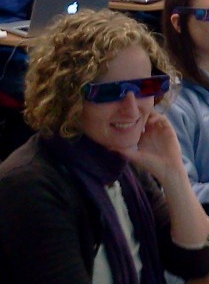
Associate Professor of Mathematics
Department of Mathematics and Statistics
Acadia University
Adjunct Professor
Department of Mathematics and Statistics
and Faculty of Graduate Studies
Dalhousie University

|
Eva Curry
Associate Professor of Mathematics Department of Mathematics and Statistics Acadia University Adjunct Professor Department of Mathematics and Statistics and Faculty of Graduate Studies Dalhousie University |
| Contact | Teaching | Research | Math for Social Justice | Curriculum Vitae | Links |
| Office: Huggins Science Hall 155 | |
| Phone: (902) 585-1793 | |
| Email: eva.curry@acadiau.ca | |
| Mailing Address: |
Eva Curry Department of Mathematics and Statistics Acadia University 12 University Avenue Wolfville, Nova Scotia Canada B4P 2R6 |
| | |
| Email is the best way to contact me. | |
| | |
| Office hours: (Fall 2011) |
TBA Or by appointment |
| Current courses: | I will be on sabbatical for the 2012/2013 academic year. |
| | |
| Past courses: | Acadia University: Math1013 (Calculus I), Math1023 (Calculus II), Math1333 (Intro. Linear Algebra), Math 3303 (Algebra I), Math 3533 (Real Analysis I), Math3543 (Complex Variables), Math4513 (Intro. Topology), Math4763 (Signal Processing and Analysis), Math5843 (Complex Analysis), Math5863 (Topics in Dynamical Systems and Ergodic Theory I and II) Dalhousie University: Calculus I, Advanced Calculus I, Intro. Complex Variables, Functional Analysis Rutgers University: Differential Equations Math4ME Workshop on programming in StarLogo (University of Maine) |